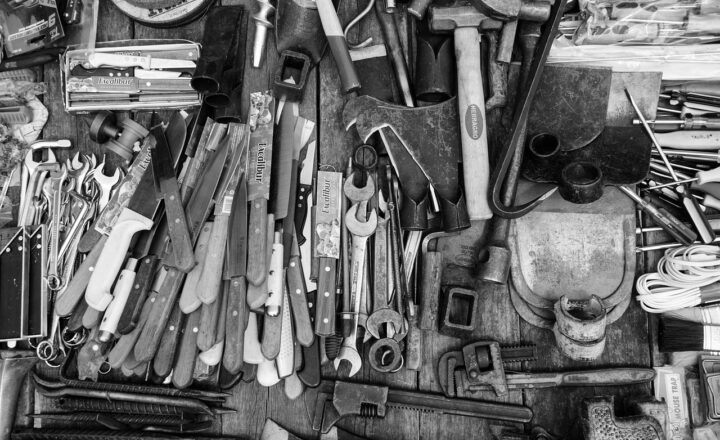
Metals have played an essential role in the development of human civilization. From the earliest tools to modern technology, the discovery and utilization of metals have enabled advancements that shaped societies worldwide. In this article, we will delve into how early humans discovered and began using metals, exploring the timeline of metal usage, the significance of these discoveries, and the various applications that emerged as a result.
1. The Timeline of Metal Discovery
Metalworking began during a time known as the Metallurgical Age, which is generally divided into three significant periods: the Copper Age, the Bronze Age, and the Iron Age. Each period marked a stepping stone in human progress driven by the discovery and utilization of metals.
1.1 The Copper Age (approximately 4500 – 3200 BCE)
The first metal to be widely used by humans was copper. Ancient civilizations began to experiment with copper around 4500 BCE, particularly in regions like the Middle East. Early humans discovered that copper could be easily shaped and formed into tools and ornaments. The initial process involved smelting, which is heating copper ore in a fire until it became malleable.
Artifacts from this period demonstrate that copper was used for:
- Tools: Simple implements such as knives, chisels, and axes.
- Jewelry: Decorative items were fashioned for personal adornment, indicating early humans’ value of aesthetics.
- Weapons: Basic weaponry such as spearheads and arrow tips made from copper have been discovered in archaeological digs.
1.2 The Bronze Age (approximately 3200 – 1200 BCE)
Bronze, an alloy of copper and tin, was first created around 3300 BCE in the Middle East. The discovery of how to combine these two metals significantly advanced tool-making and craftsmanship. Bronze tools were stronger and more durable than their copper predecessors. This period saw an explosion in the development of weapons and tools that changed the landscape of warfare and agriculture dramatically.
Key advancements during the Bronze Age included:
- Improved Tools: Plows, sickles, and other agricultural tools that enhanced productivity.
- Advanced Weaponry: Swords, shields, and armor made from bronze revolutionized combat.
- Artistic Expression: Bronze was also used to create intricate sculptures and decorative objects, reflecting the cultural and artistic evolutions occurring during this time.
1.3 The Iron Age (approximately 1200 BCE – 600 CE)
The transition to iron introduced a new phase in metal usage. Iron, being more abundant than copper and tin, became the primary metal used for tools and weapons. The techniques for iron smelting improved over time, leading to stronger and more resilient tools.
The arrival of the Iron Age brought about important developments:
- Superior Weapons: Iron swords and spears provided significant advantages in warfare, allowing armies to expand and conquer new territories.
- Agricultural Advancements: Iron plows improved farming efficiency and food production, which supported larger populations.
- Cultural Exchange and Trade: With these advancements came trade routes for iron, facilitating cultural exchange among civilizations.
2. The Process of Metal Discovery and Usage
The journey of discovering metals was not a straightforward path; it involved a combination of curiosity, experimentation, and observation. Early humans likely stumbled upon metals in their natural state, noticing their properties and potential applications.
2.1 Discovering Native Metals
The earliest metals to be discovered were native metals, such as copper and gold, which can be found in a pure form in their elemental state. Humans initially collected these metals from riverbeds or as nuggets and began crafting them into rudimentary tools and ornaments. The malleable nature of these metals made them easy to shape, thus facilitating their use in various applications.
2.2 Smelting and Alloying
The next evolutionary step in metal discovery was smelting — the process of extracting a metal from its ore by heating it to a high temperature. This technique required an understanding of fire and temperatures, which early humans developed over time.
2.3 The Invention of Alloys
Once early humans learned about alloying, the game changed. The formation of alloys, like bronze through the combination of copper and tin, demonstrated innovative thinking and knowledge of material properties. This advancement facilitated the creation of stronger tools and weapons, showcasing early engineering skills.
3. The Impact of Metal on Early Societies
The discovery of metals triggered profound changes in every aspect of life for early human societies. From social structures to economic systems, metallurgy revolutionized existence in the following ways:
3.1 Economic Advancements
The ability to create and trade metal tools allowed societies to expand and specialize. This led to the development of early markets where metal goods were traded, and craftsmen emerged as a new social class.
3.2 Social Structures and Warfare
The advent of stronger weapons influenced social hierarchies and the balance of power among tribes and early civilizations. Societies that could produce superior metal tools gained military advantages, leading to territorial conquests and the rise of influential leaders.
3.3 Artistic and Cultural Progress
Metals provided a medium for artistic expression that was previously unattainable. Decorative arts flourished as metals were carved, molded, and cast into intricate designs for ornaments, statues, and ceremonial items.
4. Conclusion
The discovery and usage of metals marked a pivotal turning point in human history. From small tools to advanced weaponry, metals not only transformed daily life but also shaped the course of civilizations. Understanding this history allows us to appreciate the ingenuity of our ancestors and inspires continued innovation in our modern world. As we gaze upon metallic wonders today, let’s remember the remarkable journey that laid the foundations for their existence and the intricate relationships they forged among societies throughout history.
With the ongoing advancements in metallurgy, who knows what future discoveries await us? The story of metals is far from over, and each new innovation builds upon the legacy of our early human ancestors who first dared to harness their power.






